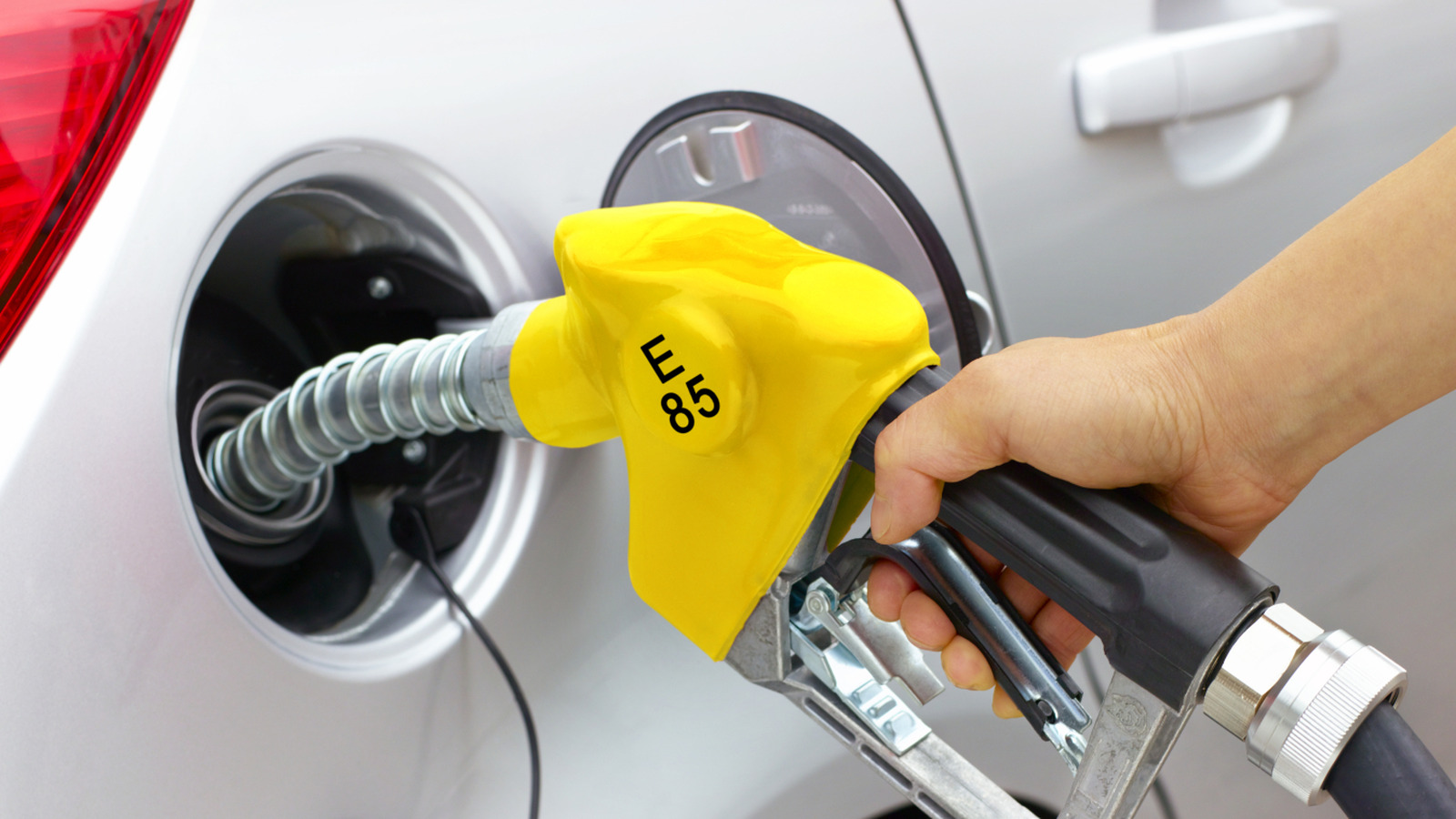E85 — aka Flex Fuel — is a domestically produced, renewable, alternative fuel blend consisting of around 85-percent ethanol and 15-percent gasoline. Made for use in specially prepped flex fuel vehicles, it’s the most common flex fuel available on the market. There are currently, as of March 2025, more than 4,200 public gas stations in 44 US states that sell E85 alongside regular old dinosaur squeezins. Most of those E85 pumps are clustered in and around the Midwest where corn is king, though flex fuel is generally available in other regions if you know where to look.
Flex fuel has been available to greater or lesser degrees since the 90s, and during that time it’s been fodder for countless arguments, studies, and forums flame wars. Questions about E85’s effectiveness, efficiency, and whether or not it’s just a handout for corn farmers have been hashed out over and over again. It’s largely settled science at this point, however. E85, like anything else, has its pros and cons, and whether the cons outweigh the pros is entirely up to the end user.
The pros and cons of corn juice
E85’s pros and cons are pretty well-trodden ground these days.
On the plus side, E85 is renewable, sustainable, and burns cleaner than straight gasoline which reduces a vehicle’s greenhouse gas emissions. It also typically costs less per gallon than regular unleaded, but that can vary by availability. In addition, an engine running E85 is pretty resistant to spark knock as flex fuel typically has an octane rating over 100. Also, the amount of sheer energy flex fuel packs shouldn’t be overlooked, and flex fuel vehicles tend to produce more torque and horsepower when running E85 than they do on regular unleaded.
Now, of course, there are some downsides to mixing all this corn into your gasoline. For starters while flex fuel produces more power and torque, it’s less efficient than gasoline and running it reduces a vehicle’s fuel economy — you’ll always go fewer miles on E85 than you would on an equivalent amount of gasoline. High concentrations of ethanol in fuel can also make a car hard to start, especially in cold weather. In fact, the amount of ethanol in E85 is often reduced in winter months to help deal with this issue. Finally, there are some places E85 just isn’t available. Sure, you can run regular fuel in a flex fuel vehicle, but you paid all that money for flex fuel capabilities so why would you?
Can I use E85 in my vehicle?
To run E85, a vehicle either needs to be built to run it or it must have undergone a conversion to use it. The golden age of American flex fuel vehicles ran from around the mid-aughts to the late teens, when it seemed like every brand had at least one or two models that ran E85. Currently, however, there are six MY2025 flex fuel vehicles sold in North America and they’re all GM products — the Buick Encore GX, Buick Envista, the 4×4 Chevy Silverado/GMC Sierra twins, Chevy Trailblazer, and the Chevy Trax. If you add leftover MY2024 models to that list it bumps the number all the way up to 11 with the addition of the 2024 Silverado/Sierra RWD trucks and one lone Ford, the 2024 Explorer FFV AWD.
You can usually tell a flex fuel vehicle because it will feature obvious exterior badging stating proudly that the vehicle can, in fact, use E85. In addition, many flex fuel capable vehicles have a yellow fuel cap to match the yellow rubber sheathes on E85 pumps (like diesel cars and trucks have green gas caps). If your vehicle has neither badges nor a yellow fuel cap, your owner’s manual should be able to tell you if you can safely run E85. Finally, if all else fails, you should be able to find the information on your vehicle’s preferred fuel on any number of internet forums, on Reddit, or at the manufacturer’s website.
Can I use E85 in an old or classic car?
If you have a non-E85 vehicle and you’re still intent on running corn juice in your car, you’ll have to make some changes under the hood. If your car was built after 1995 and is fuel injected, you can usually get away with a couple of simple control modules and a fuel sensor to make it flex fuel capable. Depending on your vehicle, you may need to install new injectors as well. Companies like eFlexFuel sell full kits that make converting your car to run E85 relatively simple if you have at least some basic mechanical skills.
If your car is older and/or has a carburetor, you’re going to need to do more work to convert it. Depending on your vehicle, you may have to switch out the fuel pump, tank, injectors, and any steel or rubber fuel lines due to the corrosive nature of ethanol. If your car is particularly cool and still runs a carburetor, you’ll likely need to remove the stock unit and replace it with a carburetor capable of using E85 without all the little rubber seals and diaphragms and gaskets inside melting away. Converting an older car to E85 is, as you can see, more involved and potentially more expensive. Whether it’s worth it is up to you.





